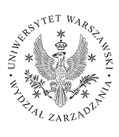Tytuł
Wpływ wydatków związanych z innowacyjnością i przedsiębiorczością na rozwój lokalny regionów przygranicznych Polski Wschodniej
Keywords
cohesion policy, local development, multiple regression
Słowa kluczowe
polityka spójności,rozwój lokalny,regresja wieloraka
Abstract
The aim of the paper is to prove the positive impact on local development by the Lisbon Strategy expressed with the public expenditures on innovation, environmental protection and labor market support in cross-border regions of the Eastern Poland. This chapter presents the basic statistics describing the priority themes and intervention categories of cohesion policy in the European Union. The study was hypothesized in line with the Lisbon Strategy, with presumption of the positive impact of expenditures for innovation, the environment and the labor market support on local development. Basic hypothesis would be accepted when at least one of proposed independent variables would be positively influencing the dependent variable. Extended hypothesis needs all independent variables to be positively influencing the dependent one. The method, used to prove the impact and to verify the hypothesis was multiple regression model with backward elimination, in which the explanatory variables were public expenditures spent within 8/11 priority themes and 71 out of 74 intervention categories of cohesion policy in 87 counties belonging to cross-border regions of the Eastern Poland (Lublin, Podlaskie, Subcarpathian and Warmian-Masurian voivodeships). Economic aggregate was chosen as a dependent variable in the model, based on average salaries in the county, treated as a measure of local development. As a result of the econometric modeling the hypothesis was confirmed in the basic variant and rejected in the extended one. The expenditures on innovation activities, being statistically significant, positively influenced the local development (with liberalized conditions of statistical significance also expenditures on entreprenurship). However, the lack of statistical significance for expenditures on environment and negative impact of expenses for the integration in the labor market on local development makes it impossible to confirm the hypothesis in extended variant.
Abstrakt
Celem autorów jest wykazanie pozytywnego wpływu strategii lizbońskiej wyrażonego wpływem wydatków na działalność innowacyjną, ochronę środowiska oraz wsparcie rynku pracy na rozwój lokalny w regionach przygranicznych Polski Wschodniej. W opracowaniu postawiono hipotezę, zgodną z założeniami strategii lizbońskiej, o pozytywnym wpływie wydatków na działalność innowacyjną, ochronę środowiska i rynek pracy na rozwój lokalny. W wariancie podstawowym przynajmniej jedna ze zmiennych niezależnych powinna pozytywnie wpływać na zmienną zależną, w wariancie rozszerzonym taki warunek muszą spełniać wszystkie zmienne niezależne. Metodą wykorzystaną w opracowaniu był model regresji wielorakiej krokowej wstecznej, w którym jako zmienne objaśniające przyjęto wydatki publiczne zagregowane w 8/11 tematów priorytetowych i w 71 z 74 kategorii interwencji polityki spójności w 87 powiatach regionów przygranicznych Polski Wschodniej (województwa warmińsko-mazurskie, podlaskie, lubelskie i podkarpackie). Z kolei jako zmienną objaśnianą przyjęto tzw. ekonomiczny agregat, oparty na średnim wynagrodzeniu występującym w danym powiecie, będący miarą rozwoju lokalnego. W postępowaniu badawczym udowodniono, że na rozwój lokalny istotny statystycznie pozytywny wpływ mają wydatki na działalność innowacyjną, a przy zliberalizowaniu warunków istotności statystycznej – także wydatki na przedsiębiorczość. Jednak brak istotności statystycznej wydatków na ochronę środowiska oraz negatywny wpływ na rozwój lokalny wydatków na integrację na rynku pracy uniemożliwia potwierdzenie hipotezy w wariancie rozszerzonym.
Recommended Citation
Romanowski, R., & Ciechomski, W. (2016). The Impact of Public Expenses for Innovativeness and Entrepreneurship on Local Development in the Eastern Poland. Problemy Zarządzania, 14(62), 225-249. https://doi.org/10.7172/1644-9584.62.13
First Page
225
Last Page
249
Page Count
24
DOI
10.7172/1644-9584.62.13
Publisher
University of Warsaw







